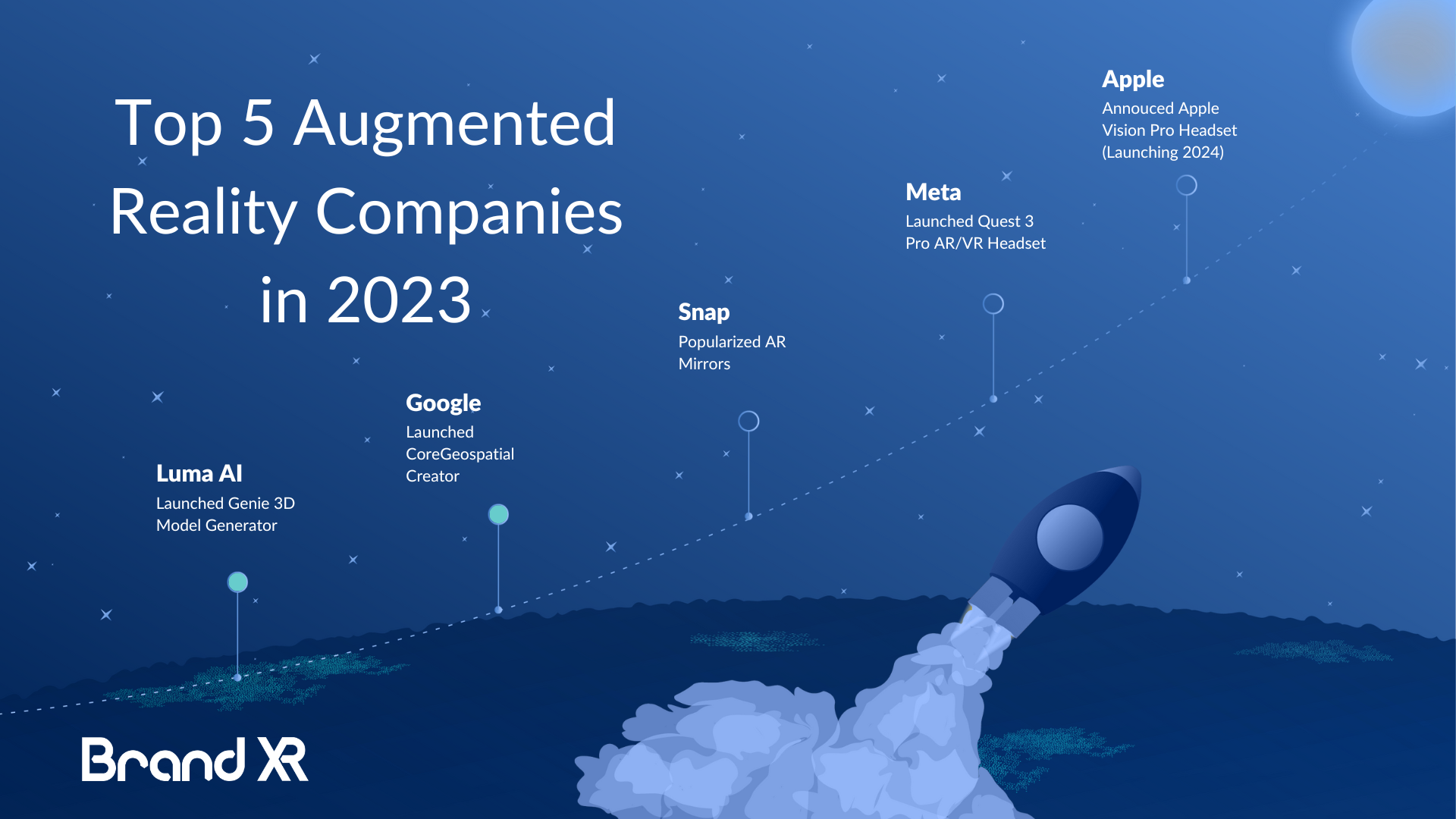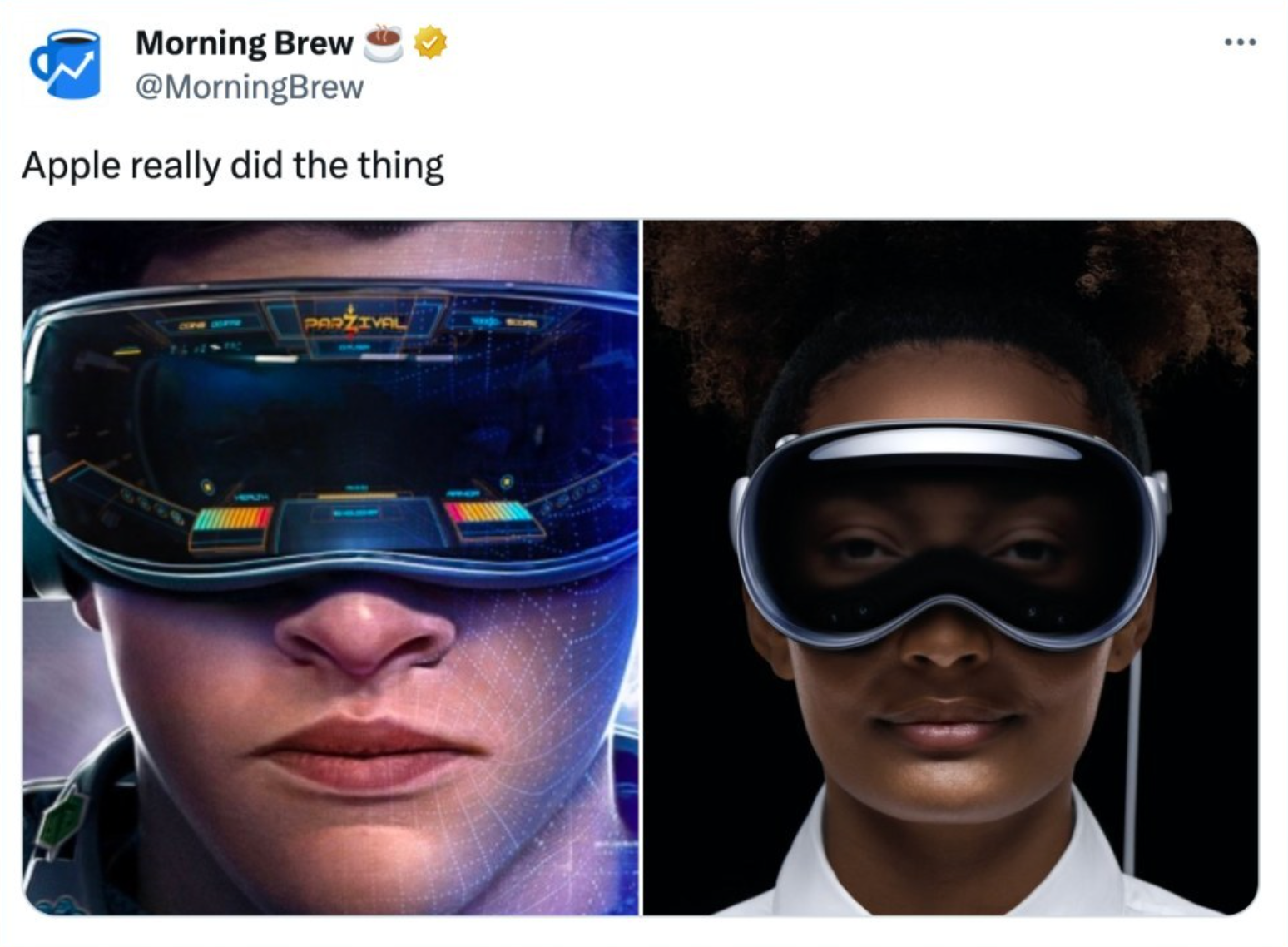Top 5 Augmented Reality Companies in 2023

In the digital era, technology companies are the new wizards, and their magic? Augmented Reality (AR). As we peer into the world through the looking glass of AR, the lines between what's real and what's digital begin to blur. But who are the conjurers leading this revolution? Let's dive into the mystical world of the top 5 augmented reality companies in 2023, shaping our reality, one digital layer at a time.
Understanding Augmented Reality (AR)
What is Augmented Reality?
Ever watched a sci-fi movie where characters interact with information layered over the real world? That's no longer just movie magic; it's a technological reality called Augmented Reality. Unlike Virtual Reality (VR), which immerses users in a completely digital environment, AR overlays digital content onto the real world. So, you're not out of this world; you're just experiencing this world richly garnished with digital cherries!
Why is AR Important?
Imagine trying on clothes without stepping into a store or visualizing how furniture looks in your living room before buying it. AR isn't just about cool gaming experiences; it's transforming industries, from retail and real estate to education and healthcare. It enhances user experiences, boosts sales, aids learning, and even saves lives in surgery! In short, AR is a big deal because it redefines interaction - with the world, with each other, and even with time and space!
Criteria for Evaluating AR Companies
Innovation and Technology
Evaluating the leading knights in the AR realm isn't just about who's got the coolest gadgets. It's about relentless innovation, groundbreaking technology, and how these marvels are used to stitch digital information into the fabric of reality.
Market Presence
Size matters, but in the market, presence isn't just about being big. It's about influence, brand recognition, and the ability to sway the masses with your digital wand. How do these companies fare on the global stage? Let's find out.
Customer Experience
In the end, it all boils down to this: how do these technological marvels enhance user experience? Are they making lives easier, experiences richer, and dreams more tangible? The real magic lies in delighting the user, and that's a crucial yardstick for evaluation.
Top 5 Augmented Reality Companies in 2023
1. Apple: Announcing the Vision Pro Augmented Reality Headset
Why Apple Tops the List? Apple's release of the Vision Pro Augmented Reality headset is a landmark event for 2023.
- Innovation Benchmark: Apple has set a new benchmark in AR tech. The Vision Pro boasts cutting-edge features, seamlessly blending the digital and physical worlds, offering an unparalleled user experience.
- Mass Market Appeal: Apple's entry into the AR space signifies a major shift. Known for their consumer-friendly products, they're poised to bring AR to the masses, making it more accessible than ever.
- Enhanced User Experience: The Vision Pro is rumored to offer an intuitive interface, superior comfort, and immersive experiences that are leaps ahead of current offerings.
- Industry Growth Stimulus: Apple's involvement is likely to stimulate growth across the entire AR industry, encouraging innovation and investment.
- New Possibilities for Creators and Businesses: For creators and businesses, this is an exciting opportunity. The potential for innovative AR applications is immense, opening new avenues for interaction and engagement.

2. Meta's Quest Pro 3 with Passthrough so You Can See the Real World in Full Color
Passthrough is a feature on Meta Quest headsets that allows you to step outside your view in VR to see a real-time view of your surroundings. With Meta Quest 3 and Meta Quest Pro, the more powerful internals allow for full-color Passthrough.
Let's dive into the significance of the Meta Quest 3 launch and why it's making waves as the second most important AR product launch of 2023.
- Blurring the Lines Between Real and Virtual: Meta Quest 3 pushes the boundaries of AR technology. Its advanced sensors and AI algorithms create an incredibly realistic augmented reality experience, making it almost indistinguishable from the real world.
- Enhanced Interactivity: This latest iteration from Meta introduces new levels of interactivity. Its intuitive controls and user interface invite more engaging and immersive experiences, setting a new standard for AR interactions.
- Wider Accessibility: By offering cutting-edge technology at a relatively affordable price point, Meta Quest 3 is positioning AR technology within reach of a broader audience. This democratization is crucial for the growth and acceptance of AR.
- Developer Support and Ecosystem Growth: Meta's commitment to supporting developers with advanced tools and resources is fostering a thriving ecosystem. This is pivotal for the creation of innovative and diverse AR content.
- Impact on Various Industries: From gaming and entertainment to education and business, the Meta Quest 3 has the potential to revolutionize multiple sectors by offering more dynamic and engaging AR experiences.
- Social VR Integration: Building on Meta's vision of a more connected world, the Quest 3 emphasizes social VR, bringing people together in a shared virtual space regardless of physical distances.
3. Snap Popularizing Augmented Reality Mirrors
Let's delve into why these mirrors are not just reflective surfaces but gateways to a new realm of interactivity and engagement.
- Immersive Interactions: These AR mirrors are more than just mirrors – they're interactive portals. Imagine trying on fashion items or testing makeup virtually, with real-time reflections and alterations. This is not just a step forward in AR; it's a leap into a future where our physical and digital selves merge seamlessly.
- Retail Revolution: For the retail sector, this is groundbreaking. The AR mirrors offer customers an unparalleled shopping experience, blending the convenience of online browsing with the tangibility of in-store shopping. It's a perfect harmony of efficiency and experience.
- Enhanced Social Connectivity: In the era of social media, these mirrors are not just tools for exploration but also for expression. Users can create and share their augmented reflections, adding a new dimension to social connectivity and content creation.
Why Snap Inc. Stands Out
Snap stands out because it understands its users. It's not just about technology; it's about expression, creativity, and community. Their AR tools aren't just features; they're bridges to a shared experience, a communal mosaic of digital stories.
4. Google Launching CoreGeospatial Creator
Geospatial Creator, powered by ARCore and Google Maps Platform, empowers developers and creators alike to visualize, build, and launch robust and engaging 3D digital content in real world locations through Photorealistic 3D Tiles. Create an immersive experience in minutes with real time localization and real time augmentation.
Geospatial Creator gives you access to the same 3D map source used by Google Earth, through the Map Tiles API. With this powerful API, you can bring to life mobile immersive experiences, customized to your users’ location.
Google's AR Niche
Google's strength lies in its vast ecosystem. By integrating AR into Search, Maps, and even YouTube, Google ensures that AR isn't an isolated experience; it's woven into the tapestry of our digital lives.
5. Luma AI Raised $20 Million to Make Creating 3D Easier
Luma AI's Mission is to democratize 3D. Hollywood Quality, photorealistic 3D for everyone.
They believe 3D is the most powerful creative medium, whether it be for 2D screens or 3D devices of the future. This realization has swept through the creative world in the last decade and we are building AI to bring this incredible expressive power to every artist, every studio, and eventually every phone. Stories of the future will not be told in still images or linear videos. The future is interactive, generative, it's 3D.
Luma AI has already shipped impressive tools that help users create NERFs, Gaussian Splatting, video flythroughs, and 3D models using generative AI. Look out for promising things from the Luma AI team in the future, they're still a young startup but they're punching above their weight so they deserve to be on this list!
The Future of AR Companies
Emerging Trends
As we gaze into the crystal ball, what does the future hold for AR? We're looking at a world where digital information is as real as physical entities. A world where experiences are shared across realities, where learning is immersive, and where every story can be lived and not just told.
We believe the biggest trend for 2024 will be incorporating AI into AR/VR workflows.
TALK TO A PRO
We're here to bring your brand to life!
Stay Connected with BrandXR
Create Augmented Reality for Free!
Create, Publish, and Measure 3D Augmented Reality Experiences Without Having to Code.














